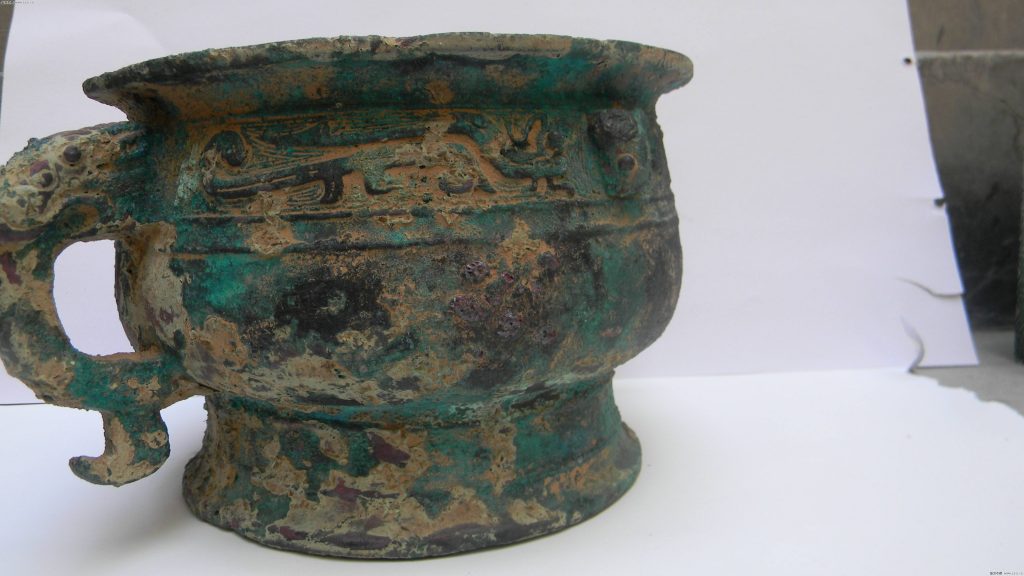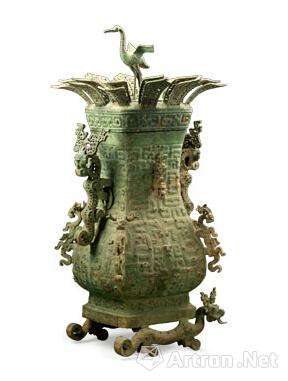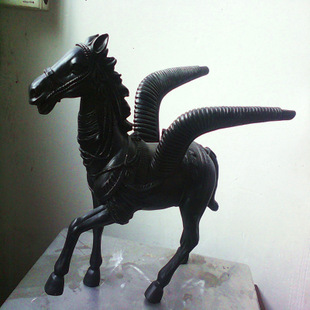Spiritual Essence in Bronzeware
4 min readThe Bronze Age refers to the period when bronze tools and weapons were commonly used.
The Bronze Age in China lasted more than 1,500 years, from the Xia (2070-1600 BC) through the Shang(1600-1046 BC) and Western Zhou(1046-771 BC) dynasties, to the Spring and Autumn Period(770-476 BC). Large numbers of unearthed artifacts indicate a high level of ancient bronze civilization in the country. They feature rich political and religious themes, and are of high artistic value.
Great Ding for Yu

The ding was originally a cauldron for cooking, with three legs and two ears as handles. It later evolved into a ritual object.A representative example is the Great Ding for Yu, cast about 3,000 years ago during the reign of King Kang(1020-994 BC) of the Western Zhou Dynasty. Now preserved in the Museum of Chinese History, the huge ding, more than a meter tall, is characteristic of the solemnity of the ritual objects of that time.
During the Shang and Zhou dynasties, those in power were keen to cast large-size bronzeware as state ritual objects or symbols of their power. The king of a state would bestow bronzeware on his officials to show his authority, while the latter would receive such articles asan honor. The Great Ding for Yu illustrates this power relationship. Its interior is inscribed with 291 characters, unusually numerous for similar bronze objects of the period. They were instructions by King Kang to General Yu, warning him against drinking. The general was about to launch an expedition, and the king was reminding him of the fall of the Shang Dynasty, which had been replaced by Western Zhou.
The body of the Great Ding for Yu and its three legs bear images of a taotie,a legendary animal notorious for its greed for food. The tiaotie has a head with a huge mouth. It does not have a body. It is not clear why such a strange, greedy beast was popularly used to decorate bronze ritual objects. One possible reason was probably to use its malevolent image to ward off evil.
Great Ding for Yu, one of the representative works of China’s Bronze Age
Lotus and Crane Kettles

A pair of square bronze kettles from the late Spring and Autumn Period are two outstanding artifacts from China’s Bronze Age. Their name comes from the ornamental themes on the kettles. Compared with the solid and solemn style of bronzeware in the Western Zhou Dynasty, the square kettles are light in stature and graceful in style. The exquisite carvings on the kettles feature smooth lines and elaborate designs without looking too crowded.
The square kettles are not exactly square, as the four sides of each are not exactly of thesame width. The neck is a little narrower than the body, which bulges towards the bottom. Two dragon-like animals are attached to two facing sides, which seem to serve as handles.A legendary beast clings onto each of the four lower corners. Two strange beasts hold up the kettle from underneath the bottom rim. The lid is decorated with a ring of lotus petals, arranged in two layers resembling a lotus in full bloom. At the center of the lotus flower is perched a crane, stretching its neck and flapping its wings.
Lotus and crane square kettle, with the lidsfying crane evoking a sense of motion The heavy body of the kettle and the light crane on the lid set off each other, as do the exotic patterns on the surface of the kettle and the elegant posture of the crane.
Aside from the flying crane and the two beasts on the bottom, with their tails coiling upwards, the smaller flying dragons on the neck and the swimming dragons on the lower part of the kettle all imbue the heavy bronze object with a sense of motion. In particular, the fully open lotus petals resemble a floating cloud, on which the crane flies.
Galloping Horse Overtaking a Flying Swallow

Cast during the Eastern Han Dynasty (25-220), Galloping Horse Overtaking a Flying Swallow stands out as an immortal work of sculpture in the history of Chinese art.
The horse was an important subject in ancient Chinese sculpture. Galloping Horse Overtaking a Flying Swallow differs from the other sculptures of horses in that it represents motion, rather than the horse itself.
Galloping Horse overtaking a Flying Swallow, Eastern Han Dynasty, representing the artistic imagination of a heavenly horse flving through the skies When a horse gallops full speed, it looks as if it were flying in the air. So the ancient Chinese thought of a fast horse as a “heavenly steed soaring in the skies.”Usually, the sculpture ofaswift horse had to be set atop a floating cloud. Galloping Horse Overtaking a Flying Swallow, however, has one of its hind hoofs set on a swallow in flight, while the other legs are airborne The horse holds its head high, with its eyes staring, its nostrils flaring and its ears up. Part of the mane is standing erect, while the tail thrown up in the air. Its body features strong, smooth muscles, and its belly is contracted as it runs. As the galloping horse overtakes the tiny swallow, the latter turns back to look at it in surprise.
One would normally imagine that a swallow flies faster than a galloping horse. Now that the horse has overtaken the swallow, it inspires the viewer to imagine how fast the horse is running. Li Bai(701-762), one of the best-known poets of the Tang Dynasty(618-907), wrote the poem “Song of the Heavenly Horse”. Two of the lines can be borrowed to describe this sculpture:”Looking back at the black swallow,/(The horse) laughs at its slowness.”








